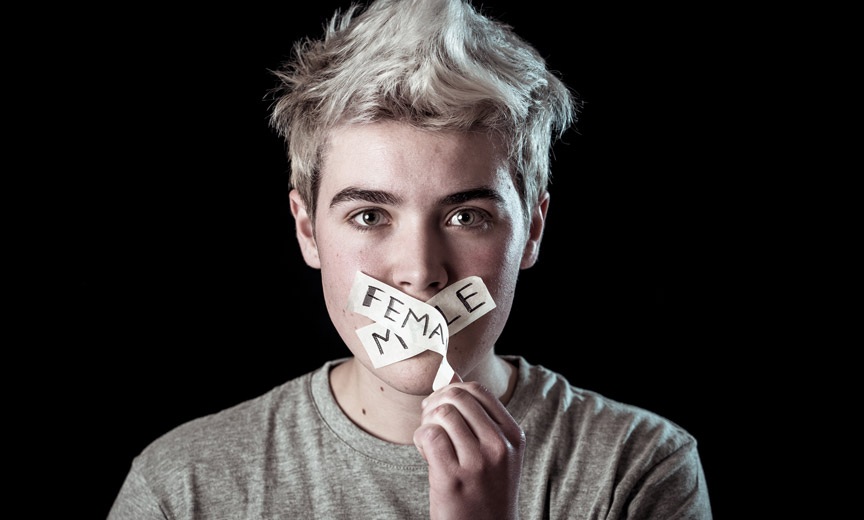Autogynephilia is a term coined by psychologist Ray Blanchard in the 1980s to describe a phenomenon he observed in some transgender individuals. The concept suggests that certain transgender women are motivated by an erotic desire to become or be seen as women. While autogynephilia has been influential in shaping discussions around transgender issues, it has also sparked controversy and criticism within the scientific and LGBTQ+ communities. This article aims to explore the origins of autogynephilia, its implications, and the debates surrounding its validity.
Origins of Autogynephilia
Blanchard developed the concept of autogynephilia as part of his efforts to categorize and understand different types of transgender experiences. He proposed two primary categories of transgender women: those who are exclusively attracted to men (homosexual transsexuals) and those who are not exclusively attracted to men (non-homosexual transsexuals). Autogynephilia falls under the latter category, suggesting that individuals in this group experience sexual arousal or satisfaction from the idea of themselves as women.
Blanchard’s theory further suggests that autogynephilia can manifest in various ways, such as through fantasies, cross-dressing, or the desire for gender confirmation surgery. He argued that these individuals may transition in part due to the sexual pleasure derived from adopting a female identity.
Critiques of Autogynephilia
Despite its initial introduction as a scientific concept, autogynephilia has faced significant criticism and skepticism. One key critique is the lack of empirical evidence supporting the existence of distinct categories of transgender individuals based on sexual orientation. Critics argue that Blanchard’s model oversimplifies the complexities of gender identity and sexual orientation, reducing them to a binary classification.
Furthermore, many argue that autogynephilia pathologizes transgender experiences, reinforcing stigmas and misconceptions. Critics point out that the concept implies a certain level of fetishization or deviance in the transgender experience, which can contribute to societal discrimination and bias against transgender individuals.
Challenges to Blanchard’s Theory
Several researchers and activists within the transgender community have challenged Blanchard’s theory of autogynephilia. Some argue that it fails to consider the diverse and individual nature of gender identity. Gender dysphoria, the distress associated with the incongruence between one’s assigned gender at birth and their gender identity, is a widely accepted framework for understanding transgender experiences. Autogynephilia, according to critics, does not adequately account for the psychological and emotional aspects of gender dysphoria.
In addition, critiques emphasize the subjective nature of sexual fantasies and desires, arguing that interpreting such experiences as the sole motivation for transitioning oversimplifies the multifaceted nature of gender identity.
Evolution of Perspectives
As the understanding of gender identity has evolved, so too have perspectives on autogynephilia. Some researchers and clinicians have moved away from Blanchard’s model, recognizing the limitations and potential harm associated with pathologizing transgender experiences.
The growing emphasis on self-determination and the acknowledgment of diverse transgender narratives have led to a broader and more inclusive approach in the field of transgender healthcare. Mental health professionals increasingly recognize the importance of supporting individuals in exploring and expressing their gender identity without pathologizing or stigmatizing their experiences.
The Importance of Compassionate Dialogue
Navigating discussions around autogynephilia requires a balance between acknowledging diverse experiences within the transgender community and respecting the need for scientific inquiry. It is crucial to approach these conversations with sensitivity, avoiding the perpetuation of harmful stereotypes or the invalidation of individual experiences.
Transgender individuals, like anyone else, deserve the opportunity to define and express their gender identity without facing undue scrutiny or judgment. Creating a space for compassionate dialogue that respects the complexities of gender identity can contribute to a more inclusive and understanding society.
Conclusion
Autogynephilia, as a concept introduced by Blanchard, has played a role in shaping discussions around transgender experiences. However, its validity and usefulness have been questioned and criticized by many within the scientific and LGBTQ+ communities. As our understanding of gender identity continues to evolve, it is essential to approach these discussions with an open mind, recognizing the diversity of transgender experiences and the importance of affirming and supporting individuals in their journey of self-discovery and self-expression.







